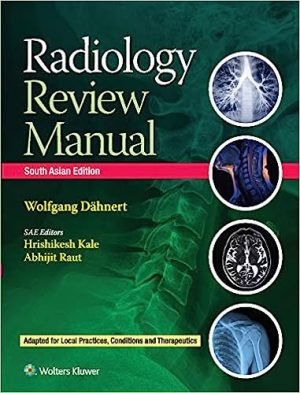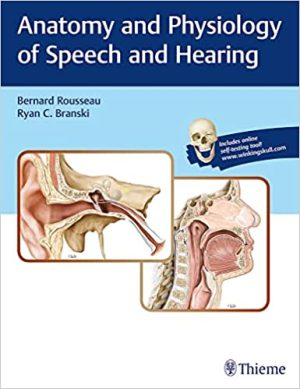Radiology Review Manual
Radiology Review Manual

Medical Books Library for Doctors, Physicians, Surgeons, Dentists, Intensivists, Physician Assistants, Nurses, Medical Technicians and Medical Students
Medical books library



Anatomy and Physiology of Speech and Hearing
Anatomy and Physiology of Speech and Hearing by Bernard Rousseau and Ryan C. Branski fulfills a growing need for a contemporary resource for students in speech and hearing science training programs. Extending well beyond traditional speech science and human anatomy, this publication encompasses the latest advances in the understanding of human physiology, basic cell functions, biological control systems, and coordinated body functions.
Anatomy and Physiology of Speech and Hearing includes award-winning anatomic artwork from Thieme’s Atlas of Anatomy, adding a rich visual basis to the clinical facets of speech, language, swallowing, hearing, and balance. The book begins with fundamentals of human anatomy and physiology such as embryology and development of speech and hearing mechanisms. The second section details nervous system functions including central and peripheral motor control. The physiology of respiration, phonation, articulation and resonance, hearing, swallowing, and balance are covered in the last six chapters.
Key Features
This core textbook is essential reading for undergraduate and graduate students in communication sciences and disorders. The connection between basic and clinical science enables students to maximize learning and apply this new knowledge during clinical placements and externships.

Provides coverage of the pathogenesis, clinical, morphologic, molecular and investigational aspects of a full range of blood disorders seen in daily practice
The revised fifth edition of this renowned atlas presents readers with a comprehensive, visual guide to clinical hematology, featuring 2700 full-color photographs and figures depicting the spectrum of hematological diseases. Ranging from photographs of the clinical manifestations and key microscopic findings to diagrams of the molecular aspects of these diseases, the book provides up-to-date information of the blood diseases that clinicians encounter every day.
Color Atlas of Clinical Hematology: Molecular and Cellular Basis of Disease offers the reader an understanding of normal cell machinery, and of the molecular basis for such processes as DNA and cell replication, RNA species, trafficking and splicing, protein synthesis, transcription factors, growth factor signal transduction, epigenetics, cell differentiation, autophagy, and apoptosis. The text goes on to explore how these processes are disturbed in the various diseases of the bone marrow, blood, and lymphoid systems.
Helps solve difficult diagnostic challenges and covers complex principles using highly illustrative, full-color images
Explores all aspects of benign and malignant hematology, including blood transfusion and coagulation with extensive coverage of the pathogenesis of common clinical entities
Provides a quick and easy reference of key diagnostic issues in a comprehensive yet concise format
Includes and illustrates the WHO Classification of Hematologic Malignancies
Illustrates the new knowledge of the molecular basis of inherited and acquired blood diseases
Color Atlas of Clinical Hematology: Molecular and Cellular Basis of Disease is the must-have resource for both trainee and practising hematologists, and for every department of hematology.
“Substantially updated and now multi-authored so that all aspects of haematology are equally covered, including the newest developments in molecular biology and genomic sequencing”
“There is a surplus of invention in communicating complex problems here and an admirable effort to keep the reader totally up-to-date”
Making speedy and appropriate clinical decisions and then choosing the best course of action is an essential skill for doctors. Exploring initial medical assessment, 100 Cases in Clinical Medicine presents 100 scenarios commonly seen by medical students and junior doctors in the emergency or outpatient department, on the ward, or in the community setting.
Each case begins with a succinct summary of the patient’s history, examination, and initial investigation. The text includes photographs where relevant and questions on the diagnosis and management of each case. The answers provide a detailed discussion on each topic, with further illustration where appropriate.
Most of the cases included are common problems but the book also includes more unusual cases to illustrate specific points and to emphasize that rare things do present. The first 20 cases are arranged by systems; the next 80 are in random order because symptoms such as breathlessness and pain may relate to many different clinical problems in various systems.
These true-to-life cases will teach students and junior doctors to recognize important clinical symptoms and signs and to develop the diagnostic and management skills needed for the cases they will encounter on the job.